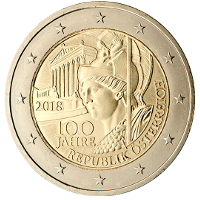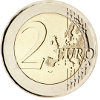 |
C o m m e m o r a t i v e C o i n s |
||
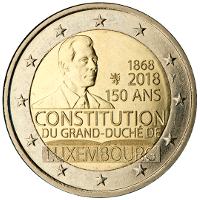 🔎
🔎 |
 |
Luxembourg | 19 Dec. 2017 | 150 years of the Luxembourg Costitution 19th coin of the Grand‐Ducal Dynasty series |
20001 20002 20005 |
319,100 |  |
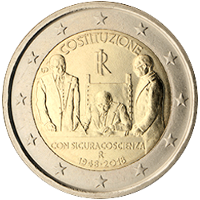 🔎
🔎 |
 |
Italy | 02 Jan. 2018 | 70 years Constitition of Italy |
20001 20002 20005 |
4,000,000 |  |
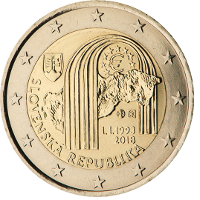 🔎
🔎 |
 |
Slovakia | 03 Jan. 2018 | 25th anniversary of the establishment of the Slovak Republic |
20001 20002 20005 |
1,000,000 |  |
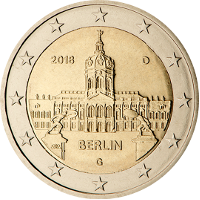 🔎
🔎 |
 |
Germany | 30 Jan. 2018 | Berlin (Charlottenburg Palace) 13th coin in the Federal States series |
20001 20002 20005 |
36,636,500 |  |
‐ ‐ Originally the Reichstag building was to be depicted on the coin. |
|||||||
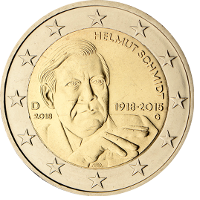 🔎
🔎 |
 |
Germany | 30 Jan. 2018 | 100th birthday of Helmut Schmidt |
20001 20002 20005 |
30,621,000 |  |
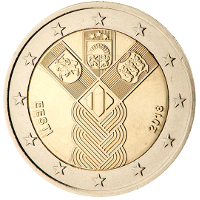 🔎
🔎
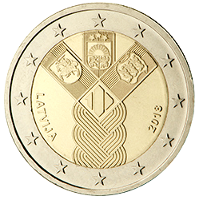 🔎
🔎
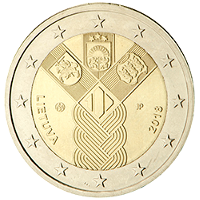 🔎
🔎 |
||||||
 |
Estonia | 31 Jan. 2018 | Establishment of the states of Estonia and Latvia, Re‐establishment of the state of Lithuania Common Issue of the three Baltic States |
20001 20002 20005 |
500,000 |  |
 |
Latvia |
20001 20002 20005 |
512,000 | |||
 |
Lithuania |
20001 20002 20005 |
1,000,000 | |||
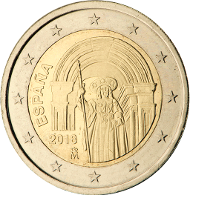 🔎
🔎 |
 |
Spain | 02 Feb. 2018 | Old town of Santiago de Compostela 9th coin in the UNESCO World Heritage Sites series |
20001 20002 20005 |
333,700 |  |
 🔎
🔎 |
 |
Spain | 02 Feb. 2018 | 50th birthday of Felipe VI of Spain |
20001 20002 20005 |
431,500 |  |
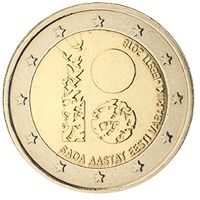 🔎
🔎 |
 |
Estonia | 19 Feb. 2018 | 100 years Independence |
20001 20002 20005 |
1,317,800 |  |
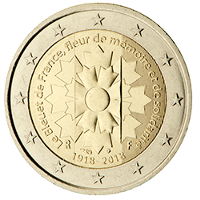 🔎
🔎 |
 |
France | 19 Feb. 2018 | "Bleuet de France" (The French Cornflower of Remembrance) |
20001 20002 20004 20005 |
15,020,000 |  |
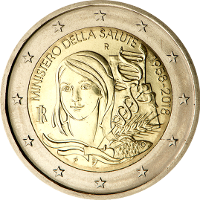 🔎
🔎 |
 |
Italy | 05 Mar. 2018 | 60th anniversary of the formation of the Ministry of Health |
20001 20002 20005 |
3,000,000 |  |
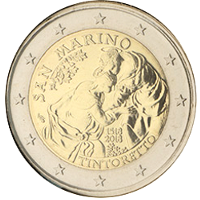 🔎
🔎 |
 |
San Marino | 05 Apr. 2018 | 500th birthday of Jacopo Tintoretto |
20001 20002 20005 |
63,100 |  |
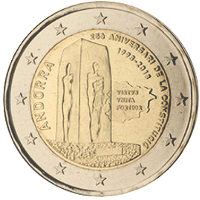 🔎
🔎 |
 |
Andorra | 12 Apr. 2018 | 25th anniversary of the Andorran Constitution |
20001 20002 20005 |
75,000 |  |
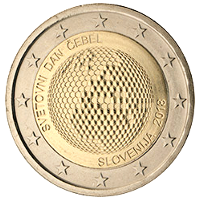 🔎
🔎 |
 |
Slovenia | 14 May 2018 | World Bee Day |
20001 20002 20005 |
1,000,000 |  |
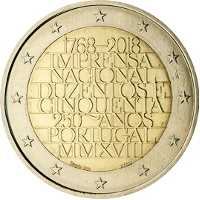 🔎
🔎 |
 |
Portugal | 22 May 2018 | 250 years since the foundation of the Imprensa Nacional |
20001 20002 20005 |
450,500 |  |
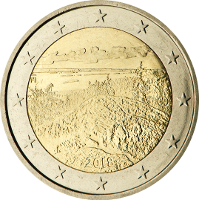 🔎
🔎 |
 |
Finland | 28. May 2018 | Koli National Park |
20001 20002 20005 |
1,000,000 |  |
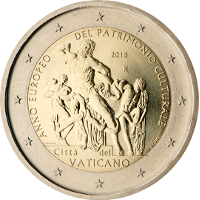 🔎
🔎 |
 |
Vatican City | 01 Jun. 2018 | European Year of Cultural Heritage |
20001 20002 20005 |
94,000 |  |
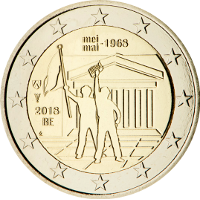 🔎
🔎 |
 |
Belgium | 19 Jun. 2018 | 50th anniversary of May 1968 events in Belgium |
20001 20002 20005 |
257,500 |  |
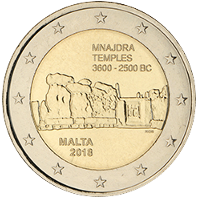 🔎
🔎 |
 |
Malta | 21 Jun. 2018 | Mnajdra Temples 3rd coin of the Maltese Prehistoric Sites series |
20001 20002 20005 |
335,000 |  |
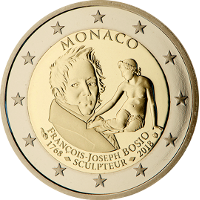 🔎
🔎 |
 |
Monaco | 25 Jun. 2018 | 250th birthday of François Joseph Bosio |
20001 20002 20005 |
16,000 |  |
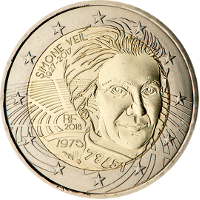 🔎
🔎 |
 |
France | 26 Jun. 2018 | Simone Veil |
20001 20002 20005 |
15,021,000 |  |
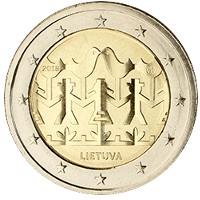 🔎
🔎 |
 |
Lithuania | 26 Jun. 2018 | Lithuania's Independence Centenary Song Celebration |
20001 20002 20005 |
500,000 |  |
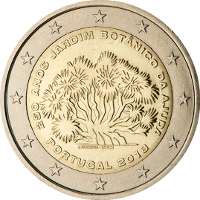 🔎
🔎 |
 |
Portugal | 25 Jul. 2018 | 250 years since the foundation of Ajuda Botanical Garden |
20001 20002 20005 |
450,500 |  |
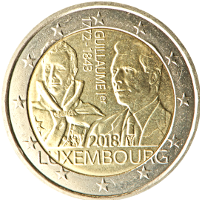 🔎
🔎 |
 |
Luxembourg | 27 Aug. 2018 | 175 years since the death of Grand Duke William I 20th coin of the Grand‐Ducal Dynasty series |
20001 20002 20005 |
311,000 |  |
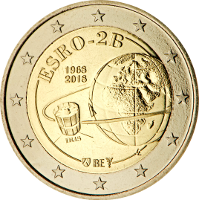 🔎
🔎 |
 |
Belgium | 20 Sep. 2018 | 50th anniversary of the launch of European satellite ESRO‐2B |
20001 20002 20005 |
257,500 |  |
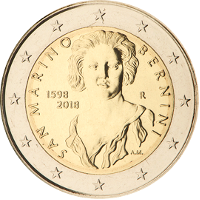 🔎
🔎 |
 |
San Marino | 20 Sep. 2018 | 420th birthday of Gian Lorenzo Berninis |
20001 20002 20005 |
63,100 |  |
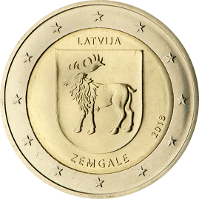 🔎
🔎 |
 |
Latvia | 26 Sep. 2018 | Zemgale (Semgallen) 4th coin of the Historical Regions series |
20001 20002 20005 |
507,000 |  |
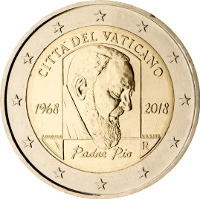 🔎
🔎 |
 |
Vatican City | 04 Oct. 2018 | 50th anniversary of the death of Padre Pio |
20001 20002 20005 |
94,000 |  |
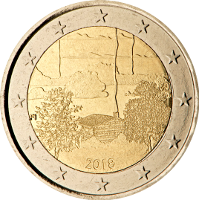 🔎
🔎 |
 |
Finland | 22 Oct. 2018 | Finnish Sauna culture |
20001 20002 20005 |
1,000,000 |  |
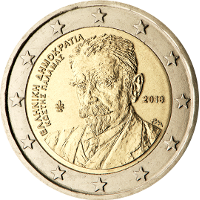 🔎
🔎 |
 |
Greece | 25 Oct. 2018 | 75th anniversary of the death of Kostis Palamas |
20001 20002 20005 |
750,000 |  |
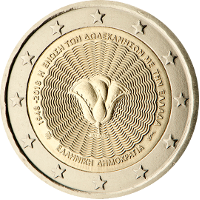 🔎
🔎 |
 |
Greece | 25 Oct. 2018 | 70th anniversary of the union of the Dodecanese with Greece |
20001 20002 20005 |
750,000 |  |
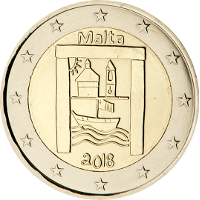 🔎
🔎 |
 |
Malta | 07 Nov. 2018 | Cultural heritage 3rd coin of the from children in solidarity series |
20001 20002 20005 |
320,000 |  |
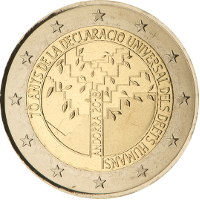 🔎
🔎 |
 |
Andorra | 26 Nov. 2018 | 70th anniversary of the Universal Declaration of Human Rights |
20001 20002 20005 |
75,000 |  |
| ⇓ 2019 ⇓ |
| References : | |||
| 20001 | Images taken with authorisation by the ECB ‐ Mail dated 20th of Feb.2020 © "European Central Bank" |
20002 | Data mirrored from Wikipedia Page "2_euro_commemorative_coins" with friendly support of the guardians of that page. |
| 20003 | Not Applicable | 20004 | Coloured version of this Commemorative Coin in circulation EU‐legal‐technical specifications do not recongnise colour prints, but the EU is tolerate them, due to the facts that their numbers are very small and that they are sold in special packs and therefor are very unlikely to be used as currency. |
| 20005 | enlarged Images taken with authorisation by Gerd Seyffert © "Gerd Seyffert 2021" |
20006 | Not Applicable |
 |
